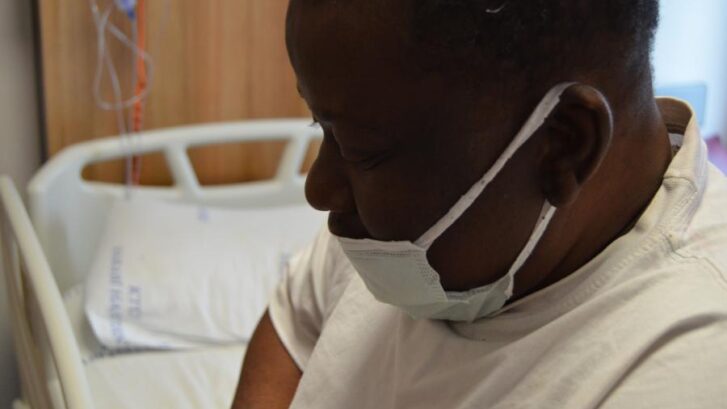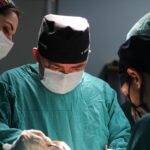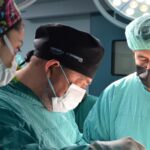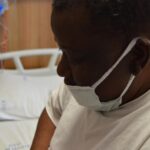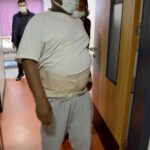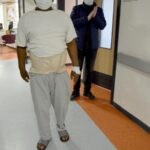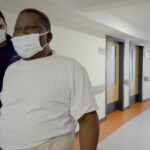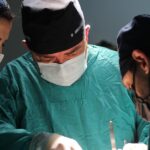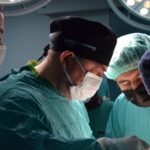A 52-year-old male patient named Fousseini DIAKITE was admitted to KTU Farabi Hospital from Mali, a West African country, with complaints of inability to walk and severe pain in the left leg. The patient stated that many traditional methods had been tried in his country before, but his complaints were getting worse and the scars seen in the lumbar region during his examination belonged to previous injections he had had.
When the magnetic resonance imaging of the patient for spinal cord diseases was evaluated, there were observed egenerative severe stenosis in the cervical spinal canal and infection involving the spine and intervertebral joints, which were thought to have occurred due to injections in the lumbar region,.
Patient was taken into neck and lumbar spine operations simultaneously by Prof. Dr. Ertuğrul ÇAKIR and his team, in Brain and Nerve Surgery Clinic,. After the operation, it was observed that the pain in the left leg of the patient decreased and he was able to walk without support in the early period. Antibiotherapy was started for the infection in the lumbar spine. Although the patient’s infection is under control, his treatment is still ongoing.
Prof. Dr. Ertuğrul ÇAKIR gave the following information about the operation:
“When our patient applied to our clinic, he had severe pain and I learned that he could not walk for 1 year. I examined the old-style MR (EMAR) films in their file, but there was no explanatory image. I suggested medicated MRI (EMAR) of the spinal cord, as I thought it would explain the current clinic. When the patient came with the results of the examination, I saw that there were severe stenosis at different levels due to degeneration in the cervical spinal canal, and that there were signs in favor of the infection between the lumbar spine, which I thought was caused by the scar in the lumbar region that I had noticed before. Since these two diseases require surgery, my team and I performed decompression and posterior instrumentation surgeries on the neck and waist regions of the patient.”
Prof. Dr. Ertuğrul ÇAKIR said the following about the operation and diseases:
“There are three main reasons for the narrowing of the cervical spinal canal. These can be listed as structural stenosis, stenosis due to aging and wear in the disc, and stenosis due to aging and wear in the spine joints. In general, it is seen as cervical myelopathy findings (limb dysfunction in arms and legs, gait disturbances, bladder and bowel dysfunction, etc.) and cervical radiculopathy (pain, numbness, loss of function in arms and legs, etc.). Although partial benefit can be obtained with drug treatment, surgery has an important place in advanced and severe cases.’’
“Lumbar spondylodiscitis and spine infections generally present with severe pain and loss of limb function, and surgery is performed when drug therapy alone is not sufficient. Although satisfactory results are not always obtained after the surgery, depending on the severity of the spinal cord and nerve damage, we are very happy that many of our patients benefited from the surgery and started walking again, as in this patient example.’’


